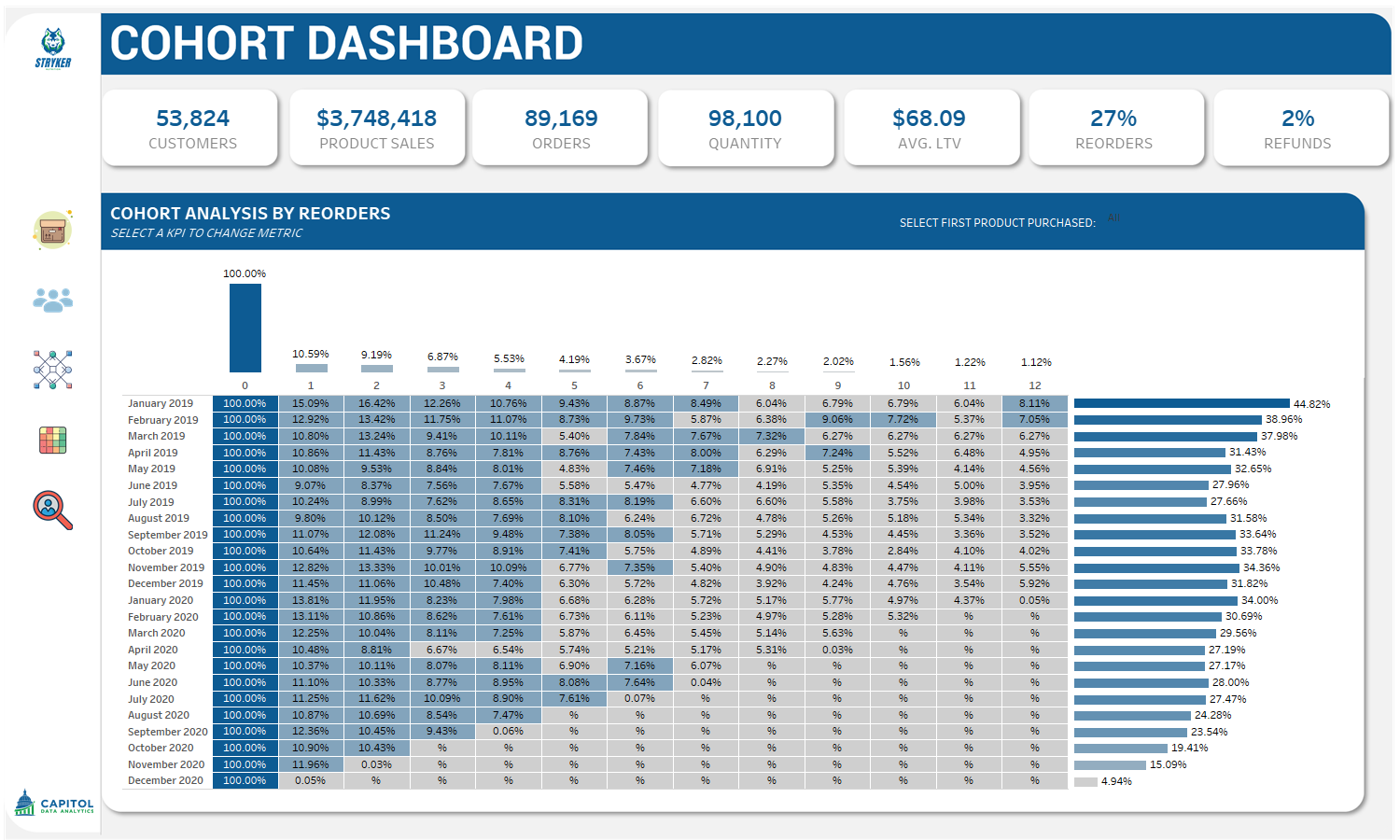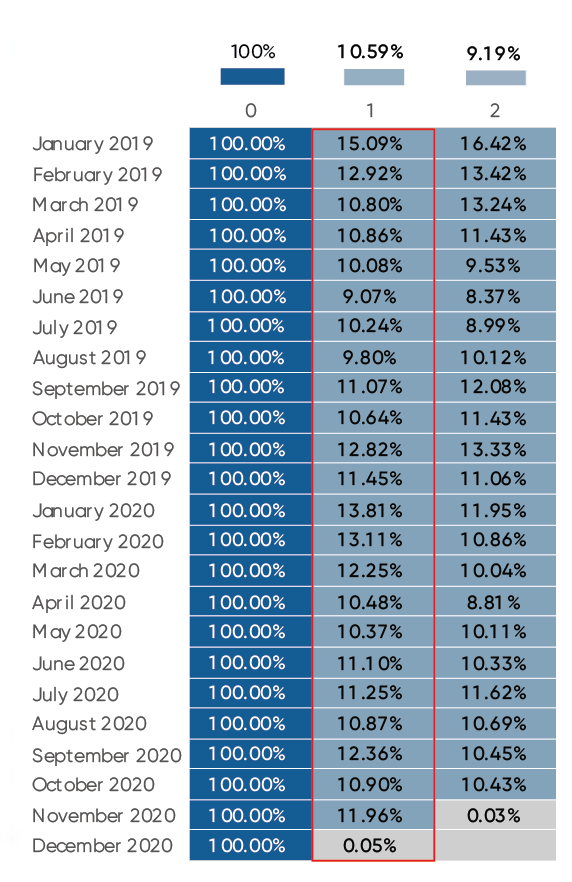Using Cohort Analysis to Grow eCommerce Profitability
Summary
A cohort analysis improves decision making by summarizing high level behavioral differences over time. A marketer can better understand the impact of touchpoints or when to deploy touchpoints to drive sales, for example. The objective of this article is to teach you what a cohort analysis is and how you can deploy it within your company to increase profit.
What is a cohort analysis?
Let’s start with what a cohort is. A cohort is a grouping of individuals by shared characteristics. A common way to create a cohort is by an acquisition characteristic such as month of first order, first product, channel that created the order, by ad campaign, etc. You will want to choose a characteristic that speaks to the purpose of your analysis. For example, if I want to understand a customer’s order journey based on first product purchase, our cohort would be first order.
An example would be if we wanted to see the churn of cohorts with a first purchase date in March vs those whose first purchase was in July. A cohort analysis allows you to ask these types questions about your cohorts.
Why use a cohort analysis?
Common uses for a cohort analysis include:
- Understanding how interventions are impacting customers. A marketer can better understand how interventions are impacting customer behavior.
- Identifying when to deploy interventions to invoke a behavior. A marketer can use a retarget campaign or discount to drive reorders because the marketer understands the typical time to reorder.
- Forecasting future performance and understand variances of cohorts. A finance administrator officer can forecast future performance on a more granular level given past performance of similar cohorts. The performance of past cohorts with similar characteristics informs actual to forecast variances.
- Identify profitable cohorts. A business owner must understand what groups of customers are driving the most to keep a business profitable.
- Measure your order rate. A marketer needs to know how much time passes between orders, to understand when to use touchpoints.
- Investigate churn rate. As a business owner you need to replenish customers at a higher rate than you are losing them. Knowing which cohorts performed better can help you identify behaviors that can decrease churn.
What can a cohort analysis not do?
A cohort analysis is a tool that identifies and measures high level behaviors across groups. A cohort analysis does not provide the exact reason for a behavior. You will need to use A/B testing and reasoning to uncover the true reason for behavior differences across cohorts.
Example of cohort analysis in action
Reorder measurement is possible using cohort analysis. The image below is from a sample cohort analysis. Our Cohorts are based on the month that someone first ordered. We can gain a lot of valuable information quickly from this view.

If we wanted to know how many people reordered in the second month across all cohorts. We would look at the topline bar above month 1 since first order. We can see that 10.59% of people reorder our product one month after their first purchase. Inversely, almost 90% customers do not reorder.

Now that we know our reorder rate is only about 10% we should look if certain cohorts are performing better, so that we can get clues on how to increase our reorder rate. If we look at all the cohorts across the 1 month column we can see that the January 2019 cohort performed very well, while the June 2019 cohort had a poor reorder rate.
The cohort analysis identified an area for us to explore in a matter of seconds. Further exploration reveals that a retention program was applied to the January 2019 cohort but not the June 2019 cohort. We also used a discount program to bring in new customers in June 2019. The confluence of interventions helps us build a theory about the reorder differences. We can now deploy A/B testing to to empirically prove how much each intervention impacted reorder rates.

Summary
The cohort analysis identifies opportunities quickly by summarizing complex information in an easy-to-read manner. The analysis helps you identify how interventions can impact profit, or help you understand cohort variances. Now you need to implement this analysis to increase your eCommerce profitability. If you need guidance on exactly how to do this, make sure to contact us.
We use tools like the cohort analysis to return 5x the project costs to our clients.